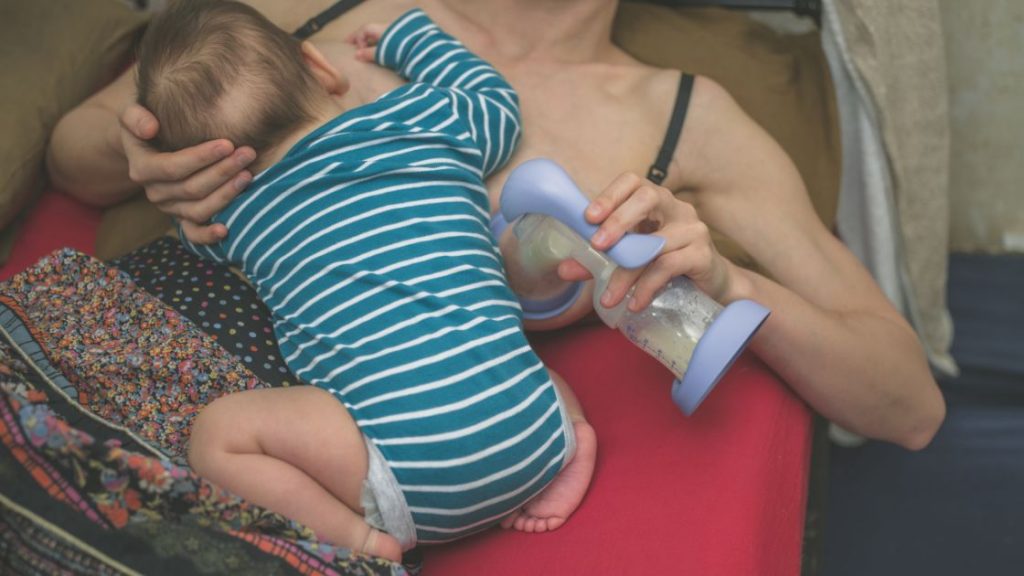The milking machine is considered an "effective assistant" to mothers in the event that they have little milk or do not have enough milk to breastfeed.
Plus, it is helpful in case of the baby is born prematurely, is not healthy, or suffers from diseases such as cleft lip, syndrome Down, etc., making it difficult for the baby to breastfeed.
However, expressing milk with a machine can damage the nipples and breast tissue. It causes breast swelling, pain, and even loss of milk due to improper use. To solve those problems, you should use the best breast pumping lubricant before pumping or expressing milk.
Best Breast Pumping Lubricant
While pumping shouldn’t hurt in theory, many moms still feel pain or discomfort when pumping milk. To improve this issue, we recommend you use Bamboobies breast pumping lubricant cream- the organic pumping accessory without lanolin.
This product can help you reduce friction, making pumping easier and more pleasant. Besides, for simpler pumping, consultants advise using a lubricant.
Moreover, with a coconut oil basis, this product is certified organic, so it is safe for moms and babies.
5 Common Reasons Why Pumping Might Hurt
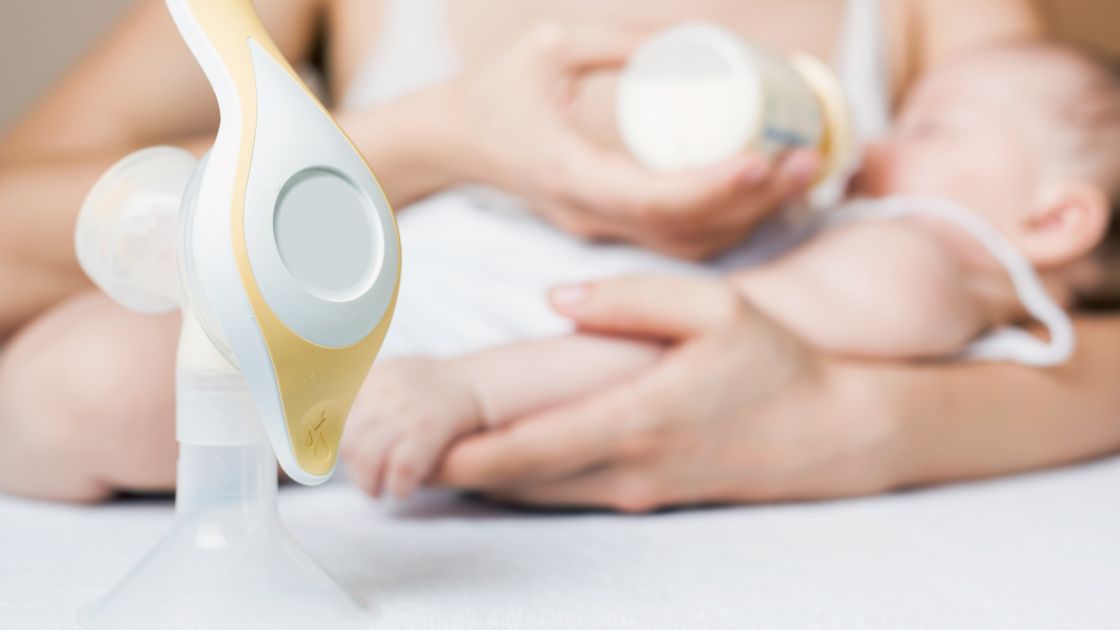
A breast pump is an effective support tool for busy moms who still want to breastfeed. This solution is often chosen when the mother cannot be reached to breastfeed directly.
However, when using a breast pump, you experience pain in your nipples and breasts. So what is the cause, and how to overcome the pain when using a breast pump?
Before we go into the details, let us list the reasons as well as the solutions, following the table for a summary below:
Reasons | Solutions |
|---|---|
1. Using funnels of an unsuitable size | You should choose the right one for the size of your nipples. |
2. Poor quality breast pumps | You should choose breast pumps from reputable brands with an exact origin, and instructions for use to avoid buying poor-quality products. |
3. Time to pump milk in once is too long | Regular pumping every 2-3 hours; each pumping should only take about 15-30 minutes. |
4. Adjusting the suction force is too strong | Mothers should choose a breast pump with the exact pumping mechanism as the baby feeding the breast milk. |
5. Sitting in the wrong position when pumping milk | The correct posture is that you should sit down and keep your backs straight. Plus, without bending or reaching up when using it. |
6. Engorgement | Frequently pumping milk might help you avoid engorgement (8 to 12 times in 24 hours). |
Using Funnels Of An Unsuitable Size
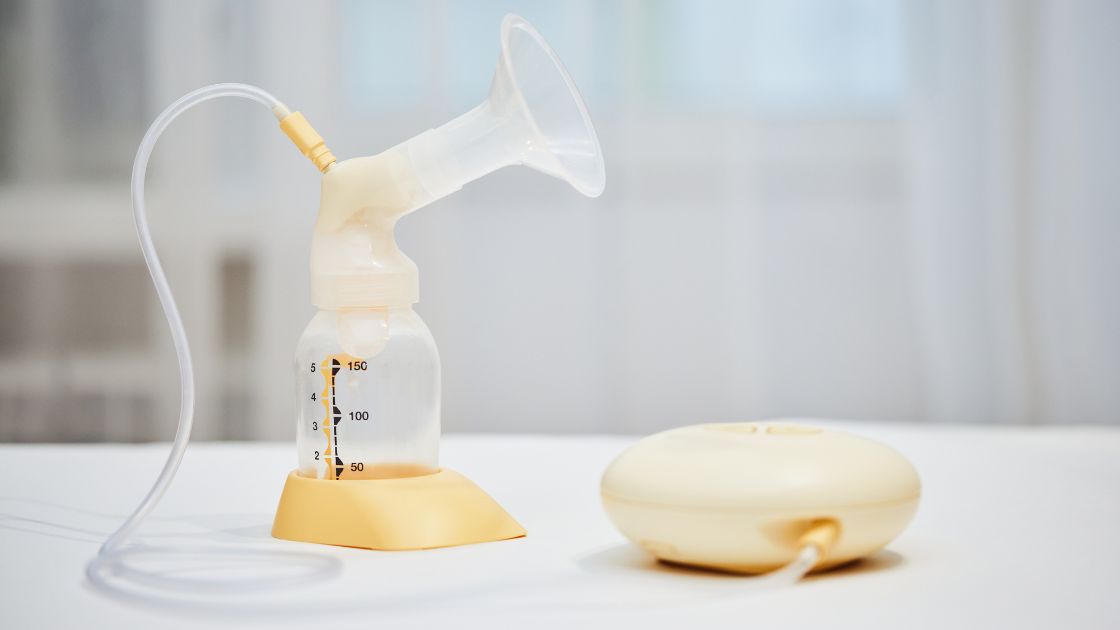
The breast pump funnel is the part that comes in direct contact with the nipple (the skin is quite thin and quite sensitive). When the funnel size is small, the nipple will rub against the funnel wall, causing pain and discomfort.
If this situation lasts for a long time, it will cause the nipple to be scratched, causing an open wound to fester.
On the contrary, if you choose too big a funnel, the nipple will be pulled back inside the funnel, causing pain in the areola area and opening, leading to the weak suction of the machine.
Solution: Choose the right funnel size for the nipple. Please note that breast size is not related to nipple size. Here is how to measure the nipple to choose the right funnel size so that you can consult it.
Nipple diameter (mm) | Funnel size |
|---|---|
16 - 18 | 21 |
19 - 21 | 24 ( standard size) |
22 - 24 | 27 |
25 - 27 | 30 |
31 -35 | 36 |
Table of funnel sizes corresponding to nipple diameter
Poor Quality Breast Pumps
Today, breast pumps on the market are quite diverse in terms of models and prices, and with that comes the difference in quality.
If the mother buys a poor-quality breast pump, it can affect the mother's health. For instance:
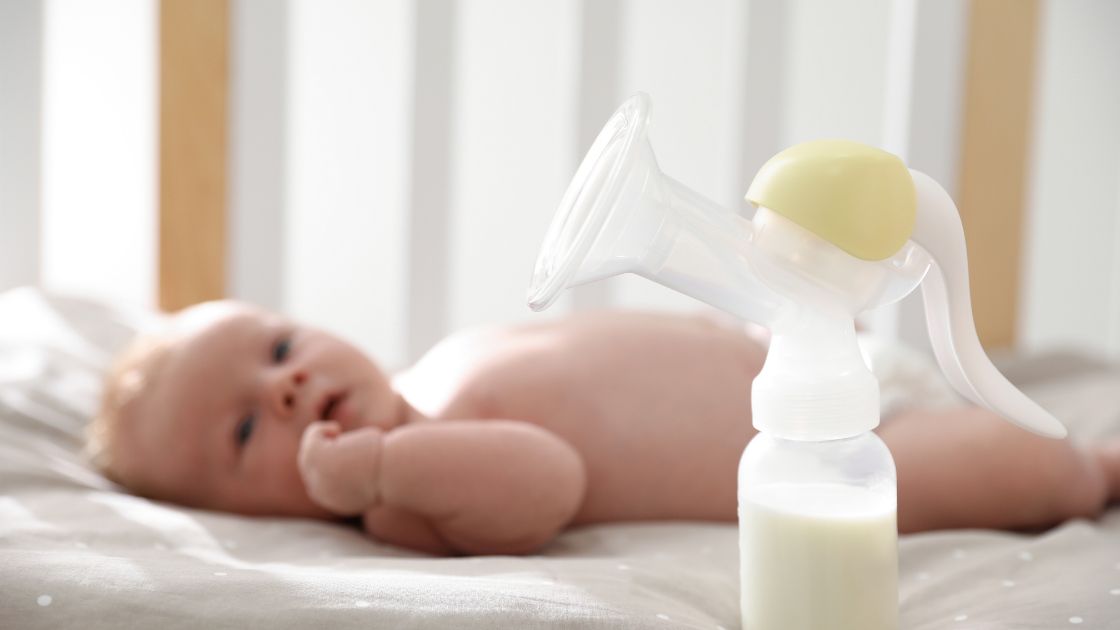
Solution: Therefore, you should choose breast pumps from famous brands at reputable store addresses, with the origin and clear instructions for use. It will help you avoid buying fake and poor-quality products. You should invest in a good breast pump to ensure your baby's health.
Time To Pump Milk In Once Is Too Long
The longer you pump, the more milk you produce. Just like you breastfeed for too long, you will have nipple pain. The same goes for using a breast pump. Therefore, the ideal time for a suction session is 15-30 minutes.
Solution: Regular pumping every 2-3 hours; each should only take 15-30 minutes. Repeat the schedule on time.
For example, the pumping schedule is 0 am - 3 am - 6 am - 9 am - 12 pm - 3 pm - 6 pm - 9 pm. You should maintain a pumping schedule at the same time every day to signal the formation of lactation habits.
Last but not least, alternate between massage mode and suction mode every 15 minutes because massage mode stimulates lactation.
Adjusting The Suction Force Is Too Strong
Mothers often think that the stronger the suction, the more milk will come out. It is a completely wrong concept and goes against the normal lactation mechanism.
Too strong suction not only does not make milk secrete more, faster, but on the contrary, it also causes nipple damage.
Solution: Mothers should choose a breast pump with the same pumping mechanism as the baby. The Medela breast pump is an optimal choice because:
Instructions for choosing the right suction level:
Sitting In The Wrong Position When Pumping Milk
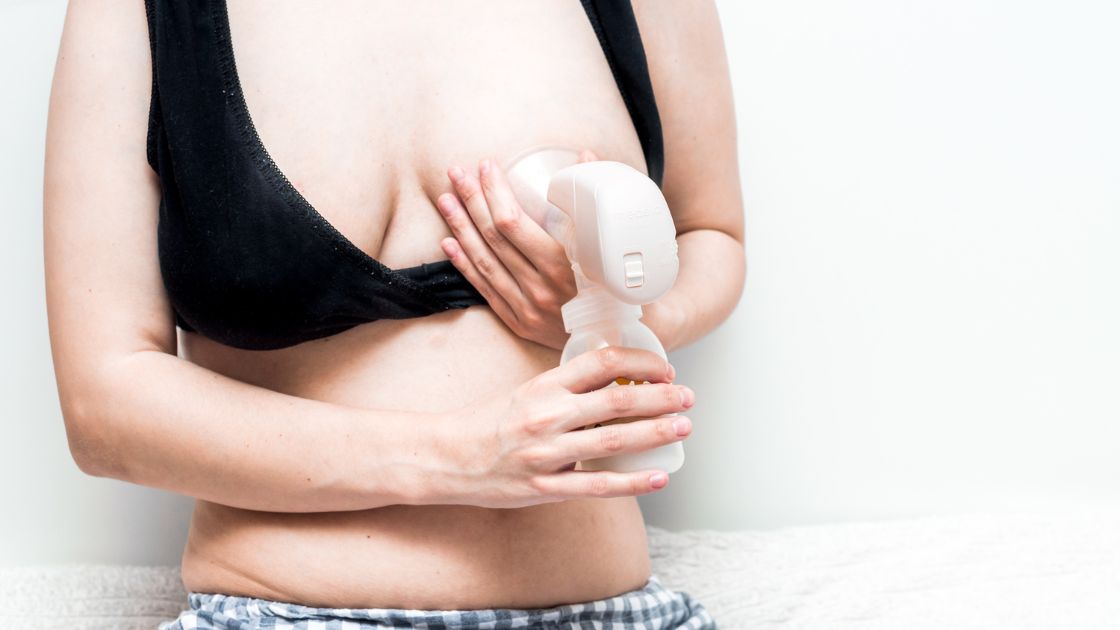
The wrong positions when mothers sit to pump milk: sitting with their back against the wall, on a chair, hunched over when pumping, sitting on their side, or even lying down to suck milk, etc.
If you frequently recline, it will affect the lactation process; more seriously, the nipple is vulnerable. In the long run, these habits will affect the spines of mothers.
Solution: when pumping, you should sit and keep their backs straight without bending or reaching up when using. Express milk in a quiet, comfortable, and distraction-free space.
Plus, moms should take deep and slow breaths! You can choose a double breast pump to help reduce back fatigue and save more milking time.
Engorgement: An overflow of the breast happens when it is not pumped or expressed in a regular and timely manner. Plus, engorgement may occur when the milk amount increases two to five days after birth. Additionally, it can happen anytime the breasts are not frequently emptied as well.
Breast engorgement symptoms include swollen, painful breasts that are firm and rigid, as well as breasts that are severely engorged, which are also warm and glossy. Ducts may have become blocked during engorgement.
Solution:
In general, there are many reasons why your breasts and nipples hurt and are painful. However, you can improve this problem by using breast pumping lubricant. Keep reading the next part to learn more about breast pumping lubricants and choose the best one to solve your issue.
Why Do You Need To Use A Pumping Lubricant?
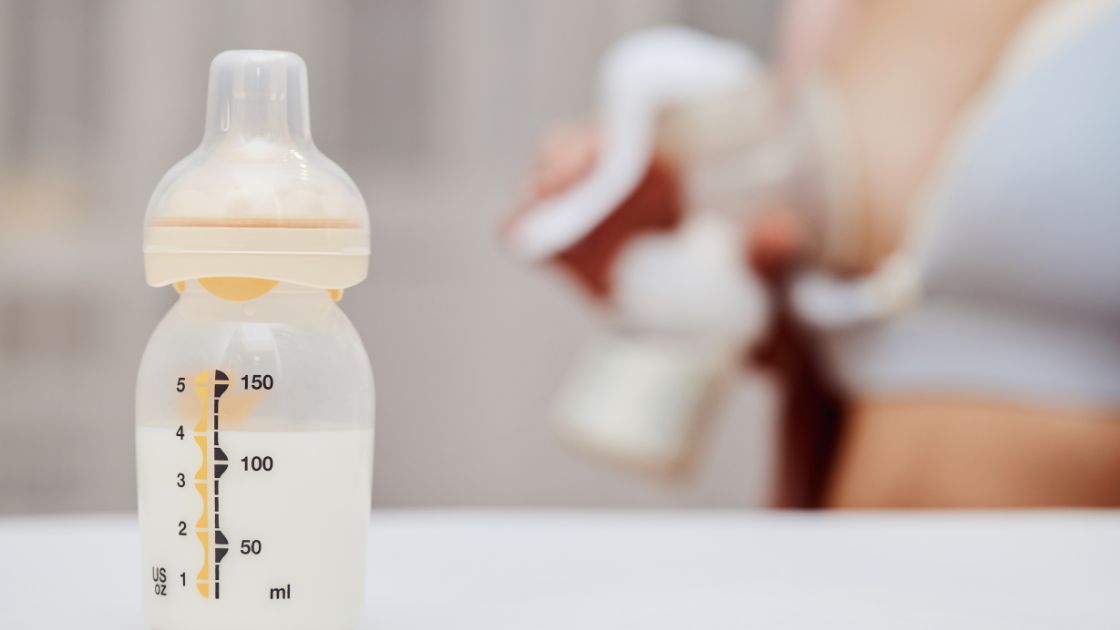
Some people feel pain while pumping breast milk. So to avoid getting hurt, it's crucial to identify and prevent or treat the problem.
Firstly, you should lubricate the inside of the breast pump’s funnel and breast with oils such as coconut or olive oil. This can make pumping more comfortable by reducing friction.
Furthermore, lubrication also promotes the recovery of your delicate nipple tissue while preventing additional injury. The lubricant is an additional barrier when pumping and absorbed into your skin over time to help replace and mend that sensitive breast tissue.
Therefore, numerous lubricants are made to be used in between sessions of nursing or pumping in order to aid the healing process.
What Kinds Of Lubricant Should I Use?
Do you get soreness during pumping? Lubrication may assist in moisturizing your nipples and reducing friction if you have the correct size breast shields. These are the most acceptable lubricants for breast pumps that you can consult.
How do moms choose suitable breast pumping lubricants for themselves? However, before we go into the details, we will let you know ways to choose the right one.
Firstly, you should choose safe breast pumping lubricants for the quality and health of your baby and yourself. That is to say, the best breast pump lubricant products are those that have natural ingredients. For example, Bamboobies Pumping Lubricant is made from organic coconut oil, olive oil, etc.
Secondly, the breast pumping lubricants must be in direct contact with breast milk, so organic lubricants are the best choice. You can consult legendary milk pumping spray, coboo, and boolu pumping spray.
Some people feel pain while pumping breast milk. So to avoid getting hurt, it's crucial to identify and prevent or treat the problem.
Firstly, you should lubricate the inside of the breast pump’s funnel and breast with oils such as coconut or olive oil. This can make pumping more comfortable by reducing friction.
Some people feel pain while pumping breast milk. So to avoid getting hurt, it's crucial to identify and prevent or treat the problem.
Firstly, you should lubricate the inside of the breast pump’s funnel and breast with oils such as coconut or olive oil. This can make pumping more comfortable by reducing friction.
Furthermore, lubrication also promotes the recovery of your delicate nipple tissue while preventing additional injury. The lubricant is an additional barrier when pumping and absorbed into your skin over time to help replace and mend that sensitive breast tissue.
Therefore, numerous lubricants are made to be used in between sessions of nursing or pumping in order to aid the healing process.
What Kinds Of Lubricant Should I Use?
Do you get soreness during pumping? Lubrication may assist in moisturizing your nipples and reducing friction if you have the correct size breast shields. These are the most acceptable lubricants for breast pumps that you can consult.
How do moms choose suitable breast pumping lubricants for themselves? However, before we go into the details, we will let you know ways to choose the right one.
Firstly, you should choose safe breast pumping lubricants for the quality and health of your baby and yourself. That is to say, the best breast pump lubricant products are those that have natural ingredients. For example, Bamboobies Pumping Lubricant is made from organic coconut oil, olive oil, etc.
Secondly, the breast pumping lubricants must be in direct contact with breast milk, so organic lubricants are the best choice. You can consult legendary milk pumping spray, coboo, and boolu pumping spray.
Thirdly, the lubricants that you choose should not have a smell since they can cause your baby don’t feed breast milk. Therefore, the Lansinoh Lanolin Nipple Cream is the best choice for moms.
Frequently Asked Questions
Utilizing a breast pump can help moms reduce the risk of breast engorgement, mastitis, blocked milk ducts, fix flat or inverted nipples, and so on.
However, using a breast pump with an unsuitable flange might cause some mothers to have painful pumping, sore nipples, nipple injury, occluded ducts, mastitis, and even a decreased milk supply.
So how to solve this problem? And some mothers don't know what kind of lubricant is suitable and safe. These are the common queries of first-time mothers. So keep reading to know more information!
What Can I Use As A Lubricant For Pumping?
Besides breast pumping lubricants, which are made from the modern technology of the industry. You can also use natural lubricants to lubricate your breasts and flanges (funnels).
The following are natural breast pumping lubricants that you can refer to using:
Using pure lanolin to treat nipple cracks
Using lanolin anhydrous to relieve nipple pain while breastfeeding is the most scientific way. Lanolin is odorless, tasteless, and safe for babies to breastfeed their mother's milk.
Olive oil
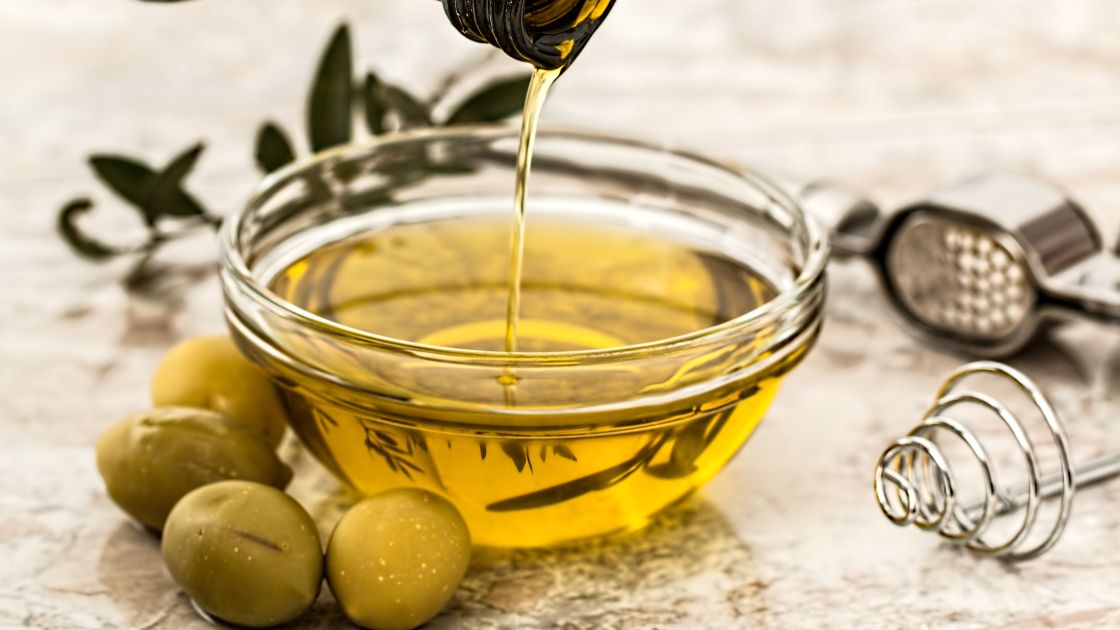
It works as a quick and effective remedy for sore nipples. Massaging your breasts with olive oil before bathing is another effective way to treat cracked nipples at home. Using a clean cotton swab to get the olive oil will ensure hygiene.
Aloe Vera
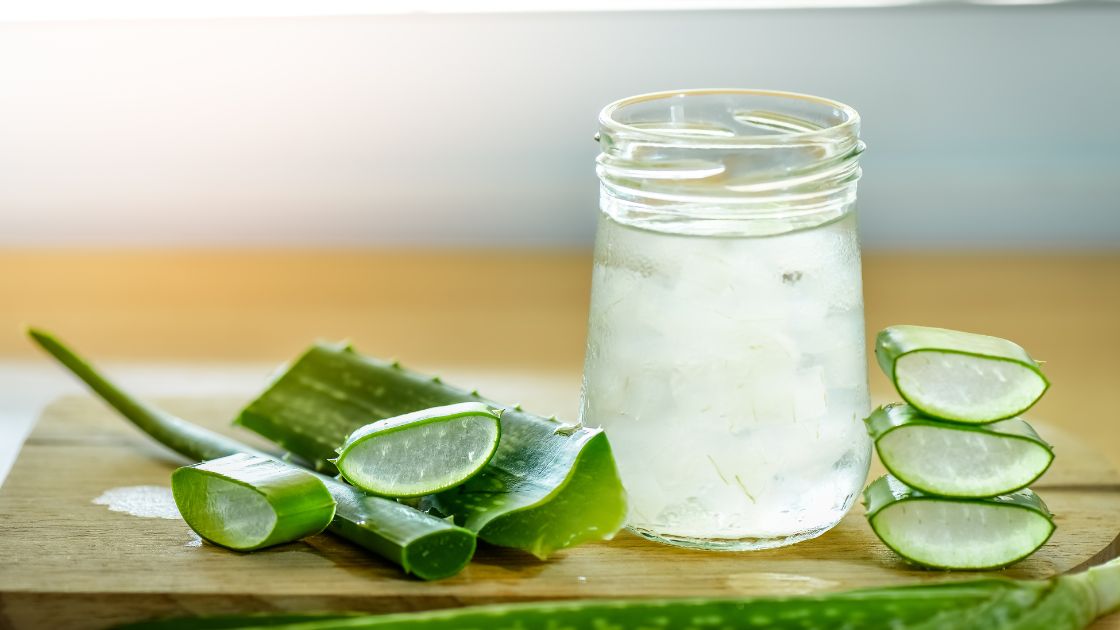
It is known for cooling and soothing dry, chapped skin. Choosing aloe vera to treat cracked nipples and lubricate is also an optimal method.
Besides, there are also many other organic breast pumping lubricants that you can use to lubricate. For instance, organic sunflower seed oil, organic cocoa seed butter, and shea butter.
Should You Lubricate Breast Before Pumping?
Of course, you should lubricate your breasts before pumping because nipple lubrication is the same as flange lubrication. It helps reduce friction and is painless when pumping.
What's more, lubricating your nipples also helps keep your nipples from drying out and cracking, which leads to pain.
Should You Lubricate Pump Flanges?
If you have nipple unpleasantness or soreness, using the lubricant can help your nipples move quickly and minimize friction. One flange tunnel spray is all necessary to stop abrasions and make pumping more pleasant.
Is Coconut Oil Safe For Pumping?
Coconut oil is a safe vegetable oil for both mother and baby. With moisturizing, good adhesion, and soothing properties, they are used to treat cracked nipples. Hence, it is one of the best safe breast pumping lubricants that you can use.
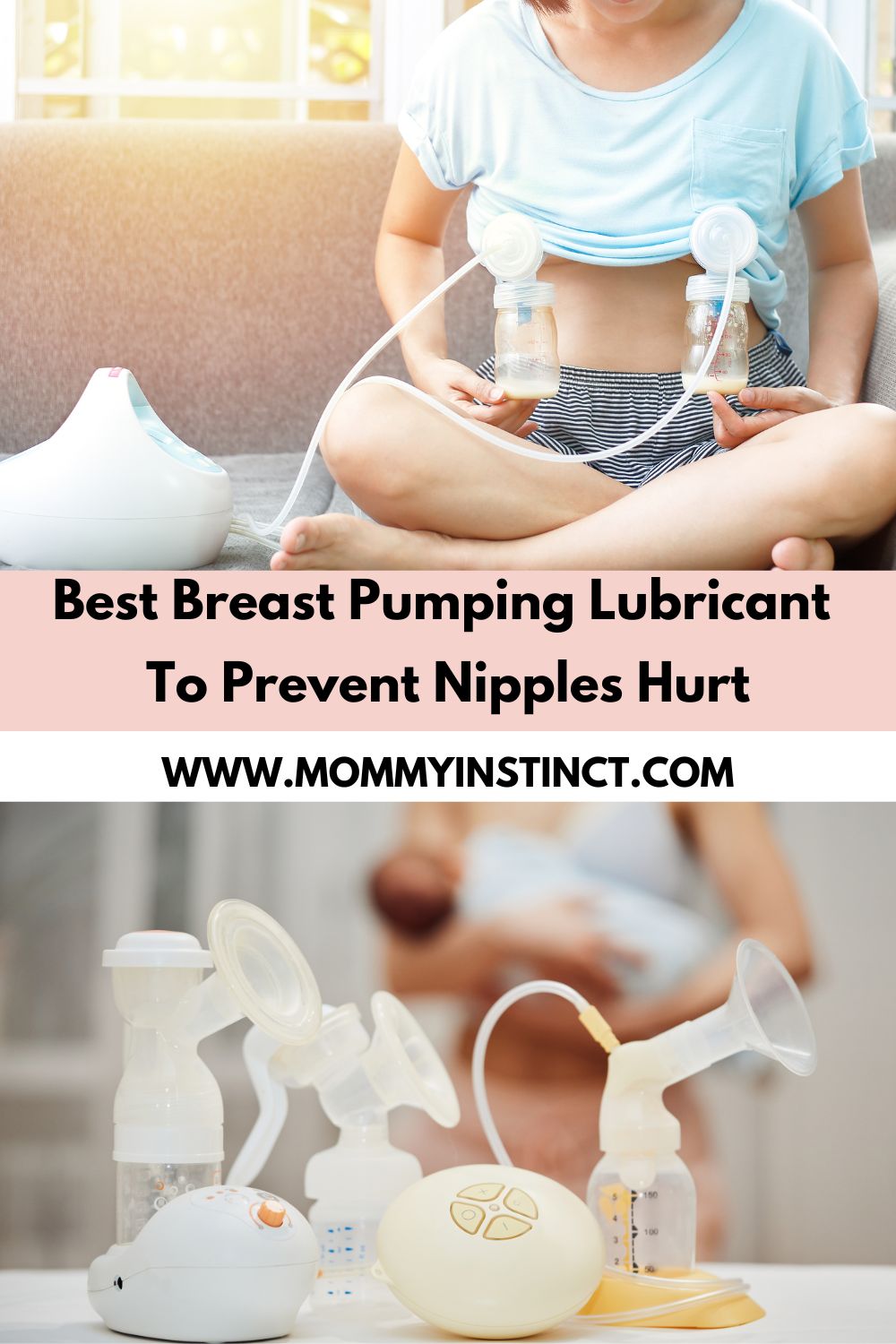
Closing
All in all, we hope our article will help you know and have the best choice for breast pumping lubricants. This article will teach you more about the painful reasons for pumping milk and ways to solve them.
Therefore, choosing the right and best breast pumping lubricant is crucial for moms to prevent hurt nipples. Not only that, it is very significant to your baby’s health.
We hope the above sharing has helped moms find the cause and how to improve the pain when pumping breast milk!

